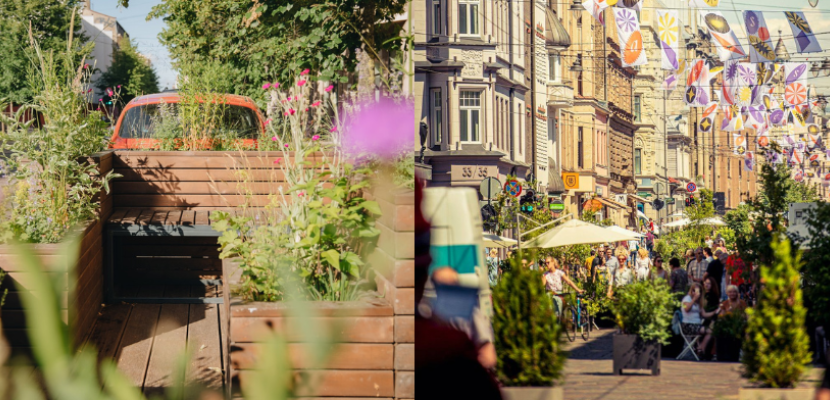
Temporary landscaping and urban experiments

About this good practice
The temporary landscaping and urban experiment practice in Riga addresses the need to enhance urban environments until permanent solutions are established. Originating in 2020 under the temporary administration of the Riga City Council, the initiative, now managed by the City Development Department, aims to green public spaces, promote pedestrian-friendly areas, and diversify urban usage, making public spaces more used and welcoming.
Implemented annually, small-scale temporary improvement projects transform various locations, initially centred on Tērbatas street in Riga's historic centre. Over time, projects have expanded citywide, decentralising from the city centre to strategically significant areas, including parklets on streets and community centre territories. The practice involves cooperation between the municipality, NGOs, and residents, facilitated by the Riga City Neighbourhood Residents Centre (NRC) to ensure community engagement in planning processes.
Stakeholders include the Riga City Council, City Development Department, Education, Culture, and Sports Department, Housing and Environment Department, municipal LLC "Riga Forests," and the Territorial Improvement Administration. The involvement of citizens fosters a domino effect, encouraging private initiatives and improving access for entrepreneurs while enhancing the quality of public space for residents and other users.
Resources needed
As these are small-scale interventions, precise accounting of invested resources has not been performed. The human resources invested in this practice are municipal employees. The funding for carrying out this practice comes from the municipality's infrastructure fund and changes yearly.
Evidence of success
The practice is deemed successful based on empirical evidence from the 2020 "Summer Street" project, which showed increased pedestrian and micro-mobility usage and heightened stationary activities. Despite compromises to maintain street accessibility, citizen satisfaction with public space improvements remained high in subsequent years. Additionally, demographic trends in central neighborhoods indicate a stabilization in population decline, possibly due to improved public space quality.
Potential for learning or transfer
The use of small-scale temporary interventions to test and demonstrate the potential for permanent urban improvements is a highly adaptable strategy. Also, the emphasis on collaboration between the municipality, NGOs, and residents, particularly through the facilitation of the Riga City Neighbourhood Residents Centre highlights the importance of community engagement in urban development. The focus on making public spaces more welcoming and used addresses a widespread need in urban environments. This goal is particularly relevant for cities looking to improve the liveability and attractiveness of urban areas for residents and visitors alike.
Further information
Website
Good practice owner
You can contact the good practice owner below for more detailed information.
